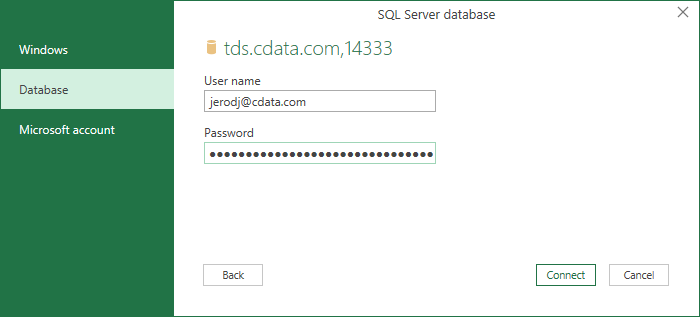Discover how a bimodal integration strategy can address the major data management challenges facing your organization today.
Get the Report →Work with Live SendGrid Data in Power Query
Use CData Connect Cloud to connect to SendGrid data and work with live SendGrid data in Microsoft Power Query.
Power Query is a data transformation and data preparation engine. When paired with CData Connect Cloud, you get instant, cloud-to-cloud access to SendGrid data from Power Query. This article shows how to connect to Connect Cloud from Power Query through Microsoft Excel and get live access to SendGrid data for transformation and preparation.
CData Connect Cloud provides a pure SQL, cloud-to-cloud interface for SendGrid, allowing you to easily integrate with live SendGrid data in Power Query — without replicating the data. CData Connect Cloud looks exactly like a SQL Server database to Power Query and uses optimized data processing out of the box to push all supported SQL operations (filters, JOINs, etc) directly to SendGrid, leveraging server-side processing to quickly return SendGrid data.
Configure SendGrid Connectivity for Power Query
Connectivity to SendGrid from Power Query is made possible through CData Connect Cloud. To work with SendGrid data from Power Query, we start by creating and configuring a SendGrid connection.
- Log into Connect Cloud, click Connections and click Add Connection
![Adding a Connection]()
- Select "SendGrid" from the Add Connection panel
![Selecting a data source]()
-
Enter the necessary authentication properties to connect to SendGrid.
To make use of all the available features, provide the User and Password connection properties.
To connect with limited features, you can set the APIKey connection property instead. See the "Getting Started" chapter of the help documentation for a guide to obtaining the API key.
![Configuring a connection (Salesforce is shown)]()
- Click Create & Test
- Navigate to the Permissions tab in the Add SendGrid Connection page and update the User-based permissions.
![Updating permissions]()
Add a Personal Access Token
If you are connecting from a service, application, platform, or framework that does not support OAuth authentication, you can create a Personal Access Token (PAT) to use for authentication. Best practices would dictate that you create a separate PAT for each service, to maintain granularity of access.
- Click on your username at the top right of the Connect Cloud app and click User Profile.
- On the User Profile page, scroll down to the Personal Access Tokens section and click Create PAT.
- Give your PAT a name and click Create.
![Creating a new PAT]()
- The personal access token is only visible at creation, so be sure to copy it and store it securely for future use.
With the connection configured, you are ready to connect to SendGrid data from Power Query.
Working with Live SendGrid Data in Power Query
With the connection to Connect Cloud configured, you are ready to work with live SendGrid data in Power Query.
- In Microsoft Excel, open the Power Query Editor (from the Data ribbon, click Get Data -> Launch Power Query Editor)
![Opening the Power Query Editor]()
- Click New Source -> SQL Server
![Creating a new SQL Server Source]()
- In the SQL Server database modal:
- Set Server to tds.cdata.com,14333
- (Optional) Set Database to the name of the SendGrid connection (e.g. SendGrid1 )
![Configuring the Server]()
- In the SQL Server credentials modal, select "Database" and
- Set User to your Connect Cloud username (e.g. user@mydomain.com )
- Set Password to the PAT for the above user
![Configuring the credentials]()
- Click Connect
- Select the table(s) you wish to work with in the Navigator and click "OK"
![Selecting the table(s) (Salesforce is shown)]()
At this point, you have live access to SendGrid data from Power Query for transformation and preparation.

SQL Access to SendGrid Data
Now you have a direct connection to live SendGrid data from Microsoft Power Query. You can create more connections and transform and preparte your data to better drive business — all without replicating SendGrid data.
To get real-time data access to 100+ SaaS, Big Data, and NoSQL sources directly from your cloud applications, sign up for a free trial of CData Connect Cloud.
















